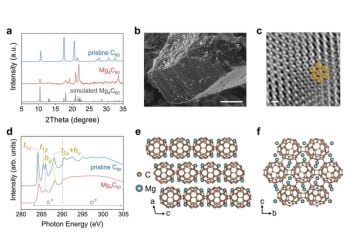- Home
- Science
- Science News
- JWST Identifies Cooling Gas in Phoenix Cluster, Unlocking Star Formation Process
JWST Identifies Cooling Gas in Phoenix Cluster, Unlocking Star Formation Process
JWST’s observations confirm missing cooling gas in the Phoenix Cluster, explaining its rapid star formation rate.

Photo Credit: Wikimedia Commons
James Webb Space Telescope Reveals Phoenix Cluster's Cooling Mystery, Aiding Star Formation Research
Observations from the James Webb Space Telescope (JWST) have revealed missing cooling gas in the Phoenix Cluster, a galaxy cluster located 5.8 billion light-years away. The discovery provides insights into how stars form despite the presence of a supermassive black hole at its core. Researchers have confirmed that the cluster contains the largest known reservoir of hot gas cooling at different rates.
JWST's Role in Identifying the Missing Cooling Gas
According to a study published in Nature, data from JWST's Mid-Infrared Instrument (MIRI) has allowed researchers to locate gas cooling at 540,000 degrees Fahrenheit (300,000 degrees Celsius). This gas was found trapped in cavities within the cluster, an area previously unobservable.
Michael McDonald, an astrophysicist at the Massachusetts Institute of Technology (MIT) and principal investigator of the study, told Space.com that earlier studies failed to detect this gas because only the extreme temperature ends of the spectrum were measurable.
Supermassive Black Hole and Star Formation in Phoenix Cluster
Despite a central black hole over 10 billion times the mass of the Sun, the Phoenix Cluster continues forming stars at an unprecedented rate. The discovery of trapped cooling gas helps explain this paradox.
The findings challenge previous assumptions about galaxy cluster cooling processes and suggest that similar techniques could be used to study other clusters. The researchers aim to apply these methods to further understand cooling mechanisms in space.
Get your daily dose of tech news, reviews, and insights, in under 80 characters on Gadgets 360 Turbo. Connect with fellow tech lovers on our Forum. Follow us on X, Facebook, WhatsApp, Threads and Google News for instant updates. Catch all the action on our YouTube channel.
Related Stories
- Samsung Galaxy Unpacked 2025
- ChatGPT
- Redmi Note 14 Pro+
- iPhone 16
- Apple Vision Pro
- Oneplus 12
- OnePlus Nord CE 3 Lite 5G
- iPhone 13
- Xiaomi 14 Pro
- Oppo Find N3
- Tecno Spark Go (2023)
- Realme V30
- Best Phones Under 25000
- Samsung Galaxy S24 Series
- Cryptocurrency
- iQoo 12
- Samsung Galaxy S24 Ultra
- Giottus
- Samsung Galaxy Z Flip 5
- Apple 'Scary Fast'
- Housefull 5
- GoPro Hero 12 Black Review
- Invincible Season 2
- JioGlass
- HD Ready TV
- Laptop Under 50000
- Smartwatch Under 10000
- Latest Mobile Phones
- Compare Phones
- Honor Win RT
- Honor Win
- Xiaomi 17 Ultra Leica Edition
- Xiaomi 17 Ultra
- Huawei Nova 15
- Huawei Nova 15 Pro
- Huawei Nova 15 Ultra
- OnePlus 15R
- Asus ProArt P16
- MacBook Pro 14-inch (M5, 2025)
- OPPO Pad Air 5
- Huawei MatePad 11.5 (2026)
- Xiaomi Watch 5
- Huawei Watch 10th Anniversary Edition
- Acerpure Nitro Z Series 100-inch QLED TV
- Samsung 43 Inch LED Ultra HD (4K) Smart TV (UA43UE81AFULXL)
- Asus ROG Ally
- Nintendo Switch Lite
- Haier 1.6 Ton 5 Star Inverter Split AC (HSU19G-MZAID5BN-INV)
- Haier 1.6 Ton 5 Star Inverter Split AC (HSU19G-MZAIM5BN-INV)

















